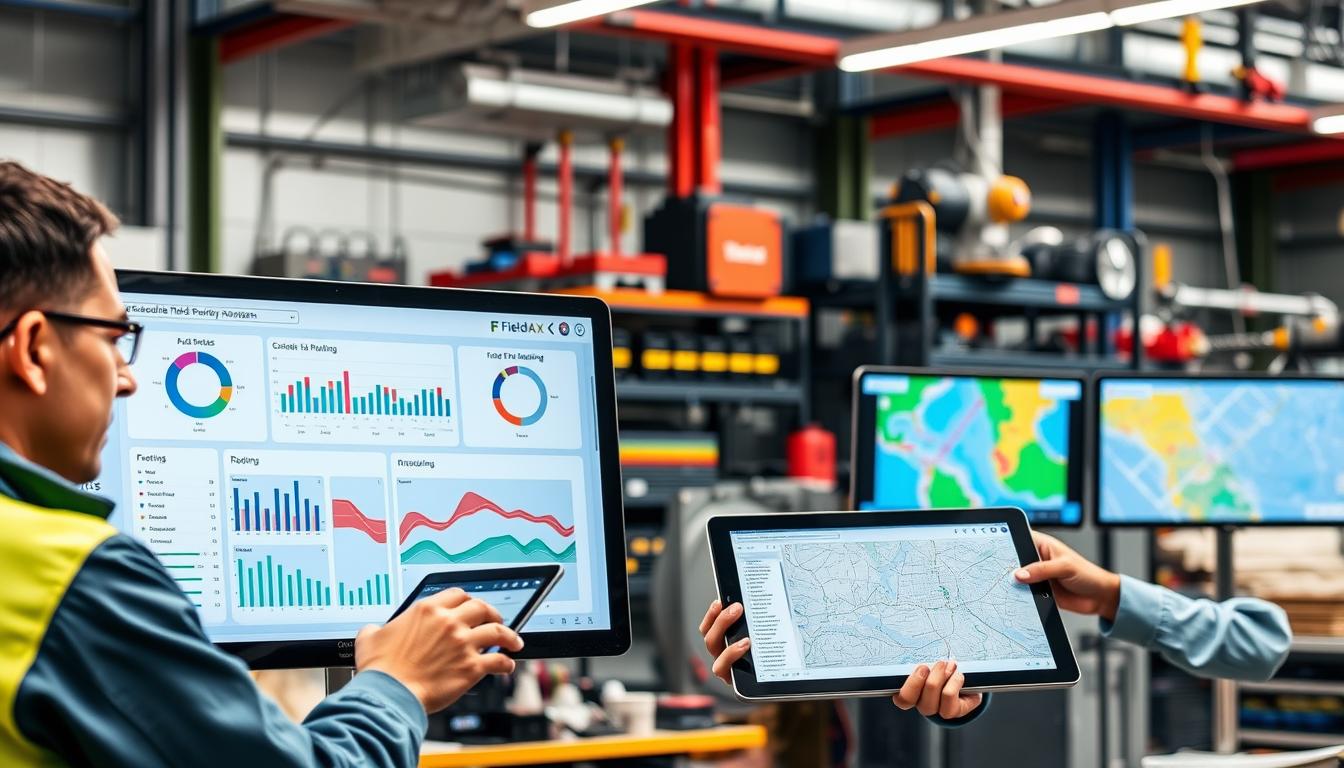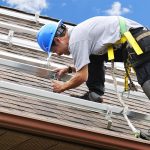Every year, elevators in the U.S. make over 18 billion trips – enough to circle the globe 450 times. Yet 23% of service calls stem from issues that regular checkups could’ve prevented. This gap between use and upkeep costs businesses millions in lost productivity and tenant frustration annually.
Modern buildings rely on vertical transportation like arteries depend on steady bloodflow. When elevators stall, everything from retail traffic to office workflows grinds to a halt. Proactive care doesn’t just keep cars moving – it protects reputations. Properties with reliable lift systems report 31% higher tenant retention rates than those reacting to breakdowns.
Tech advancements now let specialists monitor systems in real time. Sensors track wear patterns, while predictive models flag parts needing attention before failures occur. This shift from crisis response to planned care slashes repair costs by up to 40% while keeping safety protocols current.

Key Takeaways
- Annual U.S. elevator usage exceeds 18 billion trips
- Nearly 1/4 of repair emergencies stem from preventable issues
- Consistent upkeep improves tenant satisfaction by 31%
- Smart sensors can predict 85% of mechanical failures
- Proactive strategies reduce repair costs by 40%
Understanding Preventive Maintenance for Elevators
Modern buildings thrive when their transit systems work like clockwork. Regular checkups act as early warning systems, catching small issues before they escalate. Technicians who spot worn cables or misaligned doors during scheduled visits prevent 80% of emergency service calls, according to industry reports.
The Power of Consistent Checkups
Monthly assessments of emergency lights and communication systems ensure passenger safety during unexpected stops. Quarterly lubrication of pulleys and gears keeps movements smooth, while annual load tests verify weight capacity limits. These routines align with ASME A17.1 standards, reducing liability risks for property owners.
Smart Care for Smooth Operations
Digital tools now streamline inspection processes. Cloud-based platforms track door sensor performance and motor health in real time, sending alerts when parts near failure thresholds. Facilities using predictive models cut repair costs by 35% compared to reactive approaches.
Proper care extends equipment lifespan while maintaining tenant trust. Buildings with documented service histories see 28% faster lease renewals, as occupants value reliability. A well-maintained system isn’t just machinery – it’s a silent ambassador for your property’s values.
Key Components of an Elevator Maintenance Checklist
A thorough checklist transforms routine checks into reliability safeguards. Effective systems balance visual assessments with technical evaluations, covering everything from button responsiveness to motor health. Let’s explore the critical areas demanding attention.
Inside the Car and Top Car Inspections
Start with passenger-facing elements. Test all buttons and confirm emergency phones connect properly. Check control panel lights and ceiling ventilation – small details impacting user trust. Look for dents in walls or loose handrails needing repairs.
Above the cab, inspect hoist cables for fraying and lubricate guide rails. Verify brake mechanisms engage smoothly. Clear debris from emergency exits and examine door sensors for alignment issues.
Evaluating the Machine Room and Pit Conditions
The machine room houses critical components. Check oil levels in gearboxes and inspect wiring for corrosion. Ensure motors run quietly without overheating. Measure headroom clearance for safe technician access.
Below ground, the pit requires equal care. Remove water or debris that could damage mechanisms. Inspect buffers and hydraulic lines for leaks. Document any rust on the car frame needing treatment.
Essential Electrical and Mechanical Checks
Test backup power systems and emergency lighting during simulated outages. Verify door reopening sensors react to obstructions within 2 seconds. Use digital tools to log belt tension readings or bearing temperatures.
Modern platforms streamline documentation – snap photos of worn parts and assign repair tasks instantly. These steps create audit trails while keeping systems compliant with safety standards.
Practical Tips for Conducting Effective Elevator Inspections
Streamlined inspection routines keep vertical transit systems humming while building tenant confidence. Two strategies separate adequate checks from exceptional ones: clear communication protocols and smart tech integration.

Communication and Scheduling Best Practices
Alert occupants 48 hours before inspections using email blasts and lobby signage. Schedule service during lunch hours or weekends in office buildings to minimize disruptions. For residential properties, early mornings often work best.
Keep one car operational during checks when possible. Post real-time updates in building apps so users know when to expect delays. These steps reduce complaints by 67% compared to surprise shutdowns.
Utilizing Digital Tools and Smart Checklists
Ditch paper logs for mobile apps that auto-sync data to cloud servers. Snap photos of worn cables or misaligned doors directly in the inspection software. Technicians complete digital checklists 40% faster than paper versions while capturing more detail.
Use templates that auto-flag components needing attention, like emergency lights or guide rails. Automated reports with timestamps and e-signatures simplify compliance audits. Teams using these tools resolve 92% of issues during initial visits.
Identifying Common Maintenance Issues and Safety Concerns
Spotting early signs of wear keeps vertical transit systems reliable and safe. Small quirks in operation often hint at larger problems brewing beneath the surface. Let’s explore how to catch these red flags before they escalate.
Warning Signs of Component Wear and Malfunction
Scraping noises near doors or erratic leveling often signal misaligned tracks or worn rollers. Hydraulic systems may show trouble through jerky movements or oil leaks around seals. These issues account for 30% of service calls in buildings with aging equipment.
Listen for unusual hums or grinding from machine rooms – common indicators of motor strain. Doors that hesitate before closing or reopen unexpectedly typically point to sensor misalignment. Addressing these quirks quickly prevents 40% of emergency shutdowns.
Addressing Safety and Compliance Requirements
Non-functional emergency lights or stuck alarm buttons create dangerous situations during outages. Regular testing ensures these critical systems meet EN81 standards. Buildings with updated protocols resolve 90% of safety violations during routine checks.
Hydraulic elevators demand extra attention to fluid quality and valve function. Contaminated oil can lead to sudden drops in cabin pressure. Technicians should check pit conditions quarterly to prevent corrosion from moisture buildup.
Documenting every inspection and repair creates accountability. Properties with clear records resolve compliance audits 50% faster than those with disorganized files. Consistent care isn’t just practical – it’s a legal safeguard.
Conclusion
A well-maintained elevator system silently boosts your property’s reputation while keeping daily routines uninterrupted. Consistent care of mechanical parts and safety features prevents 80% of emergency calls, according to industry data. Regular checkups of door sensors, machine room equipment, and emergency protocols keep everything working smoothly.
Modern tools like cloud-based tracking platforms help teams spot worn components before they fail. These systems provide real-time alerts about parts needing replacement, cutting repair costs by up to 35%. Buildings using digital checklists resolve 9 out of 10 issues during initial visits.
Prioritizing elevator safety and timely fixes builds tenant trust. Properties with documented service histories see faster lease renewals and fewer complaints. Schedule quarterly assessments, address minor quirks quickly, and watch reliability become your building’s quiet advantage.
Remember – vertical transit systems impact everything from retail traffic to office productivity. A proactive approach keeps passengers moving safely while protecting your bottom line. Start refining your care strategy today.
See how FieldAx can transform your Field Operations.
Try it today! Book Demo
You are one click away from your customized FieldAx Demo!
FAQ
Why are regular elevator inspections critical for buildings?
Routine checks ensure safety, reduce unexpected breakdowns, and keep systems running smoothly. They help spot worn parts like door sensors or misaligned rails early, preventing costly repairs and keeping passengers safe.
What components are prioritized during an elevator service?
Technicians focus on door operations, emergency lighting, control panels, and hoist mechanisms. Hydraulic systems, brakes, and safety devices like interlocks are also tested to meet compliance standards such as ASME A17.1.
How can I tell if my elevator needs immediate attention?
Watch for warning signs like unusual noises, delayed door movements, or inconsistent leveling. Flickering lights, error codes on displays, or repeated call-button failures also indicate it’s time for a professional assessment.
Do digital tools improve inspection accuracy?
Yes! Apps and smart checklists reduce human error by guiding technicians step-by-step. Real-time data logging and cloud storage make it easier to track trends, schedule follow-ups, and share reports with building managers.
What safety standards apply to elevator upkeep?
In the U.S., ASME A17.1 outlines requirements for inspections, testing, and repairs. Local fire codes may also mandate emergency communication systems, backup power, and annual certifications to ensure passenger safety.
How often should elevator systems be serviced?
Most experts recommend every 30–90 days, depending on usage. High-traffic buildings like offices or hospitals may need monthly visits, while low-use residential units can follow a quarterly schedule.
What should I do if an elevator malfunctions mid-use?
Stay calm and use the emergency phone or alarm button. Avoid forcing doors open. Immediately contact your maintenance provider to dispatch a certified technician for repairs and document the incident for future reviews.
Author Bio
Co-Founder & CMO at Merfantz Technologies Pvt Ltd | Marketing Manager for FieldAx Field Service Software | Salesforce All-Star Ranger and Community Contributor | Salesforce Content Creation for Knowledge Sharing






